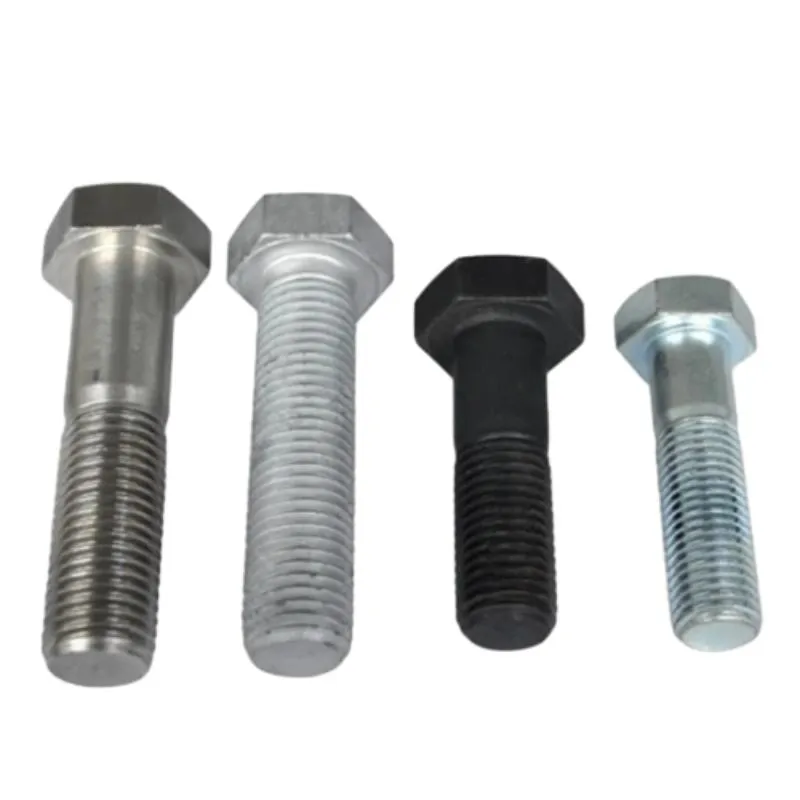aug . 18, 2024 12:43 Back to list
M20 20mm x 2.5mm Nut Specifications and Applications in Engineering
M20x2.5 Nuts A Critical Component in Modern Engineering
In the world of engineering and manufacturing, the significance of small components often goes unnoticed. Among these are fasteners like nuts, which are pivotal in assembling structures and machines. One widely used type of nut is the M20x2.5 nut, known for its robust design and versatility across various applications. Understanding the specifications, uses, and advantages of this particular nut can shed light on its importance in modern engineering.
Specifications
The M in M20x2.5 indicates that this nut follows the metric system, specifically designed to fit onto a bolt with a nominal diameter of 20 millimeters. The “2.5” signifies the pitch of the threads, which is 2.5 millimeters in this case. This means the distance between threads is 2.5 mm, which allows for fine adjustments and enhances the fastening capabilities of the nut. M20x2.5 nuts are typically classified as hex nuts, characterized by their six-sided shape, which provides ease of use with standard tools.
Material Composition
M20x2.5 nuts can be manufactured from a variety of materials, depending on the intended application. Common materials include mild steel, stainless steel, and even brass or plastic for specialized uses. Steel nuts are often coated with anti-corrosive materials such as zinc plating to enhance their longevity, especially in environments exposed to moisture or chemicals. The choice of material directly affects the nut's strength, weight, and resistance to environmental factors, making it crucial to select the appropriate type for a specific application.
Applications
m20 x 2.5 nut

The versatility of M20x2.5 nuts makes them suitable for a wide range of applications. They are extensively used in construction, automotive, machinery assembly, and furniture manufacturing. In construction, these nuts play a vital role in securing structural components, providing stability and safety. In automotive applications, they are utilized in various parts such as engines and chassis, ensuring all components are tightly held together, which is critical for performance and safety.
Furthermore, M20x2.5 nuts are invaluable in manufacturing processes where precision assembly is paramount. For example, in the assembly of machinery and equipment, the reliability of fasteners like these helps maintain operational integrity. The ability to withstand vibrations and heavy loads makes them a preferred choice among engineers.
Advantages
One of the significant advantages of the M20x2.5 nut is its strength and resistance to shear forces, allowing it to maintain its integrity even under extreme conditions. Moreover, the standardized design of metric nuts ensures compatibility with various components, simplifying the design and assembly processes in engineering projects.
The ease of installation is another appealing factor. The hexagonal shape allows for reliable grip with wrenches or sockets, enabling quick assembly and disassembly when necessary. This is particularly important in situations where maintenance or adjustments are required, as it saves time and enhances efficiency.
Conclusion
In summary, the M20x2.5 nut may seem like a simple and unassuming component, but its impact on engineering and manufacturing cannot be overstated. With its robust design, diverse material options, and wide-ranging applications, it stands as a testament to the importance of fasteners in constructing functionalities and ensuring safety in various industries. As technology evolves and new engineering challenges arise, the role of such components will undoubtedly continue to be pivotal in driving innovation and efficiency. Therefore, a greater appreciation for the M20x2.5 nut and similar fasteners is essential for anyone involved in engineering or manufacturing.


